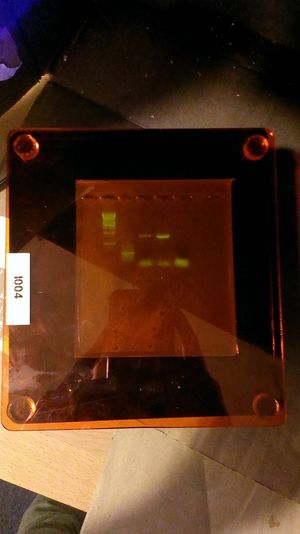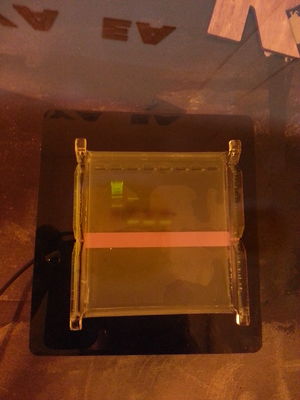BioHackerLab/Experimental
Experiments performed at Bitraf.
Innhold
05 Jul 2016 - Bitraf PCR #1

10 Jul 2016 - Bitraf PCR #2

11 Jul 2016 - Bitraf PCR #3
PCR was performed using the same PCR setup and program as July 10 except for the selection of templates and template amounts. The following templates and template amounts were used:
- #1/HS1A: 1 uL yeast sample #1. (S. Cerevisiae [1])
- #2/HS1B: 2 uL yeast sample #1. (S. Cerevisiae [1])
- #3/HS2A: 1 uL yeast sample #2. (Brettanomyces? [1])
- #4/HS2B: 2 uL yeast sample #2. (Brettanomyces?[1])
- #5/P1: 1 uL S. cerevisiae (Idun tørrgjær. Template prepared 5 july stored in freezer)
- #6/P2: 2 uL S. cerevisiae (Idun tørrgjær. Template prepared 5 july stored in freezer)
- #7/NT: Reaction mix and primers only, no template.
The PCR samples were moved to freezer after completion of the PCR run.
[1]: Liquid cultures provided by Heikki. To prepare template, 50 uL liquid culture was incubated at 98C for 10 min in OpenPCR.
Expected results/bioinformatics analysis
Reference sequence:
One of the yeast samples was described as Brettanomyces. The most relevant organism in this genus appears to be Brettanomyces bruxellensis. The organism overview page at http://www.ncbi.nlm.nih.gov/genome/11901 lists Brettanomyces bruxellensis CBS 2499 (assembly Dekkera bruxellensis CBS 2499 v2.0, Assembly accession no. GCA_000340765.1) as the representative genome for this organism.
BLAST search:
A BLAST search was performed in the GCA_000340765.1 assembly with the expected PCR product sequence for amplification with primers ITS1 and ITS4 from S. cerevisiae, as determined by in silico PCR (link). The search returned 15 hits ("Sequences producing significant alignments". The longest 100% matching sequence stretch was 17 bp long, having an Expectation value ("E value"; roughly, the expected number of identical results encountered by chance) of 5.1. The hit with lowest Expectation value and the only hit with an E value below 1, is a 34bp stretch with 28/34(82%) matching nucleotides and an E value of 0.42.
Likewise a search was performed with the ITS1 primer sequence as query. The search returned 194 hits and 94 sequences producing significant alignments. Several hits had 100% query coverage and 100% identity. However, the lowest E value reported was 25.